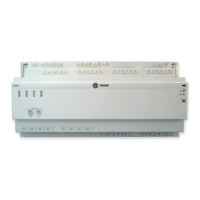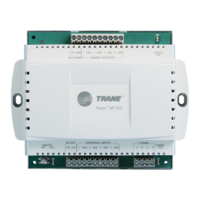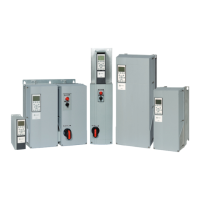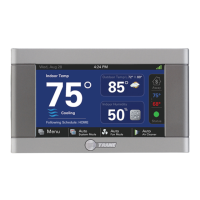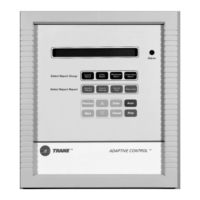VAV-SVX01C-EN 23
Wireless Zone Sensor
Choosing a Location for Mounting the Sensor
Placement of the receiver and the sensor set is critical to proper operation. In most installations,
distance is not the limiting factor for proper radio signal quality. It is more greatly affected by walls,
barriers, and general clutter. For best radio transmission range and reliability, wherever possible,
mount the receiver and sensor in line of sight. Try to minimize the number of barriers between the
pair of devices. In general, sheetrock walls and ceiling tiles offer little restriction to the propagation
of the radio signal throughout the building; concrete or metal barriers offer the most restriction.
The transmission range for the sensor is as follows:
• Open range: 2,500 ft (762 m) (packet error rate = 2%)
• Usable range: 200 ft (61 m)
• Typical range: 75 ft (23 m)
Ambient considerations
Avoid locations that are outside the operating temperature and humidity range (refer to Ta b l e 14 ,
p. 62).
Location Considerations for the Sensor
When selecting a location for the sensor, consider both thermal and radio transmission
characteristics of the location.
Thermal considerations
• Avoid areas of direct sunlight
• Avoid areas in the direct air stream of air diffusers
• Avoid exterior walls and other walls that have a temperature differential between their two
sides
• Avoid areas close to sources of heat such as sunlight, appliances, or other equipment
• Avoid drafty areas
• Avoid dead spots behind doors, projection screens, or corners
Radio transmission considerations
• Avoid metal barriers between the sensor and receiver, such as plastered walls with metal lathe
as they will decrease radio signal quality.
• Avoid placing the sensor inside metal enclosures
• Avoid radio transmissions through thick, solid concrete walls
Setting the Rotary Address Switches on the Receiver and the Sensor
Note: To expedite the installation and association process, set the addresses before applying
power to the receiver.
The process of establishing communication between the receiver and sensor is referred to as
association. The receiver and the sensor must have their rotary switches set to the same address
in order to enable communication between the two devices (see Figure 8, p. 24). Important
limitations are as follows:
• Only one associated receiver/sensor set can communicate within the reception range of the
wireless system.
• It is not possible to associate more than one sensor to a receiver, nor is it possible to associate
more than one receiver to a sensor.
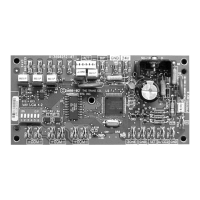
